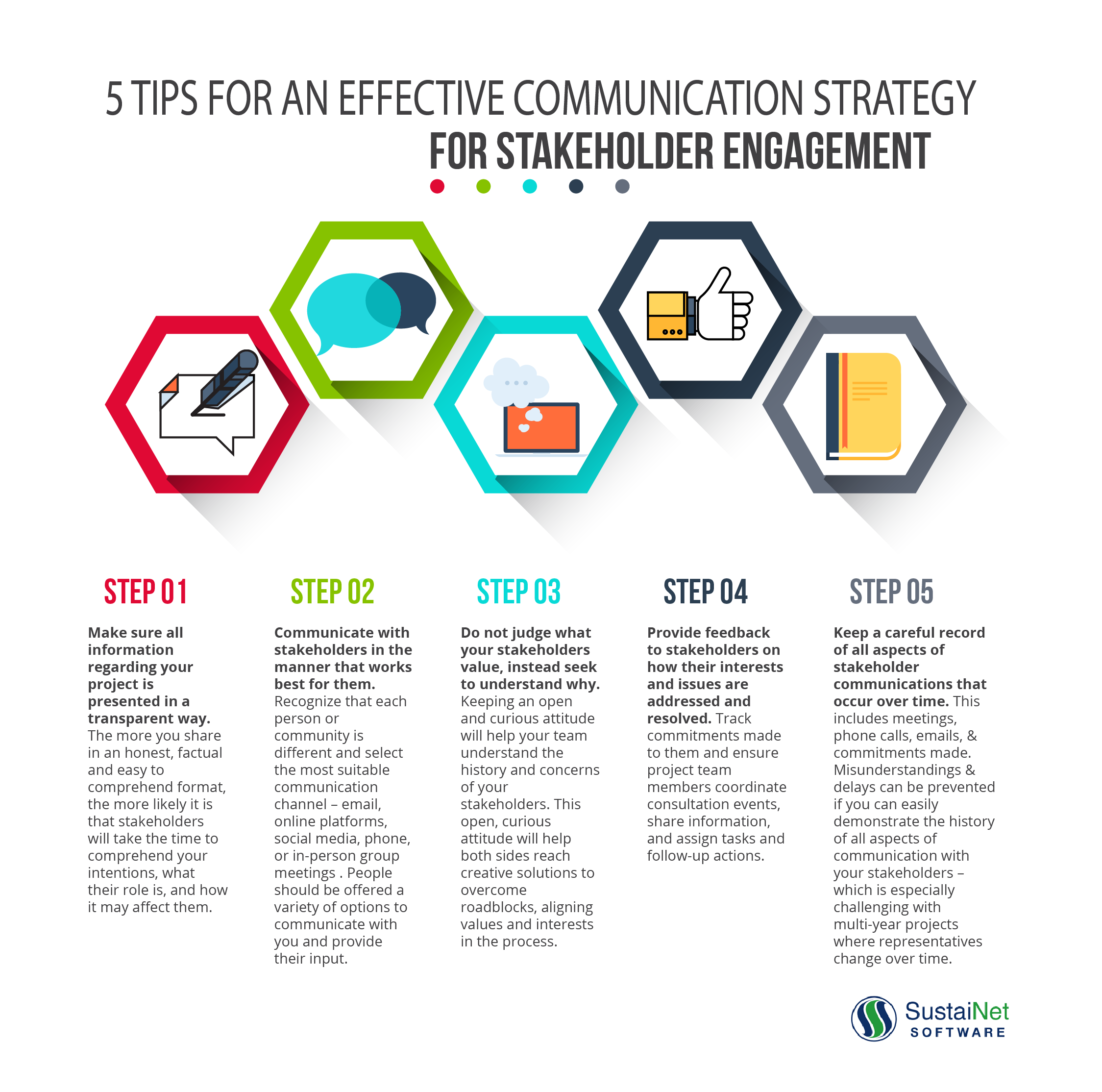
Stakeholder consultation and engagement typically follows a recognized three-step process: notification, consultation, and participation.
The public has the right to be concerned about your project, to ask questions about it, and even to oppose it. But every person should have the correct information to form her or his opinion.
Meaningful consultation that involves ongoing two-way communication with a project representative increases understanding, clarifies the community’s preferences and values, and allows the proponent to understand how the public’s views can and should lead policy decisions. However, organizations often struggle with communication with their stakeholder groups.
Factors that negatively influence communication include:
- Not understanding how to set up a stakeholder engagement project so it effectively communicates the organization’s intentions
- Suffering from a lack of focus when engaging stakeholders – and failing to define the 5 W’s (who, what, when, where, and why)
- Having the wrong person representing the organization. This can be someone who is inexperienced or whose strengths lay outside the field of communication
- Company and stakeholder groups involving multiple representatives that change over time. Relationships get lost and communication history, or commitments that were made can be forgotten.
5 tips for an effective communication strategy for stakeholder engagement
1. Make sure all information regarding your project is presented in a transparent way. The more you share in an honest, factual and easy to comprehend format, the more likely it is that stakeholders will take the time to comprehend your intentions, what their role is, and how it may affect them.
2. Communicate with stakeholders in the manner that works best for them. Recognize that each person or community is different and select the most suitable communication channel – email, online platforms, social media, phone, or in-person group meetings . People should be offered a variety of options to communicate with you and provide their input.
3. Do not judge what your stakeholders value, instead seek to understand why. Keeping an open and curious attitude will help your team understand the history and concerns of your stakeholders. This open, curious attitude will help both sides reach creative solutions to overcome roadblocks, aligning values and interests in the process.
4. Provide feedback to stakeholders on how their interests and issues are addressed and resolved. Track commitments made to them and ensure project team members coordinate consultation events, share information, and assign tasks and follow-up actions.
5. Keep a careful record of all aspects of stakeholder communications that occur over time. This includes meetings, phone calls, emails, and commitments made. Misunderstandings and delays can be prevented if you can easily demonstrate the history of all aspects of communication with your stakeholders – which is especially challenging with multi-year projects that where representatives change over time. A tool like StakeTracker helps organizations stay on top of their projects by centrally managing all communications regarding the potential impacts of initiatives on the communities in which they operate.
The value of information, and how it’s tracked and reported, is of paramount importance during the consultation process. Missteps with respect to stakeholder information management can put the success of your project in jeopardy.
Detailed consultation will identify a community’s views on your project and how this perception changes over time. It will allow you to anticipate issues and develop ways of addressing them. Ultimately, it will help develop trust and generate solutions with your stakeholders and rights-holders.
Image: Pranav under Creative Commons 2.0

Leave a Reply